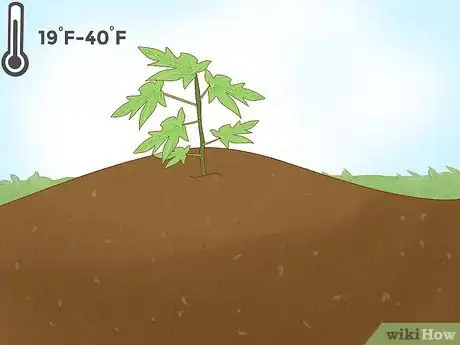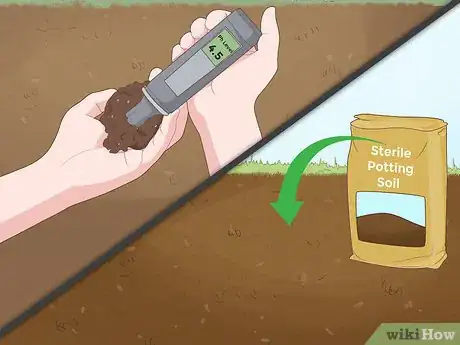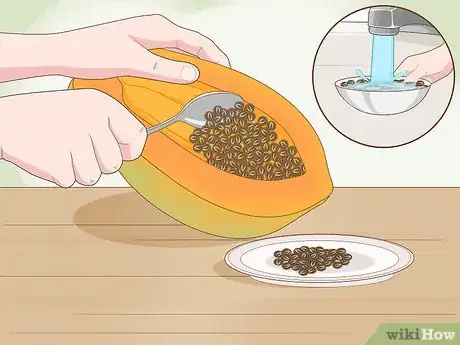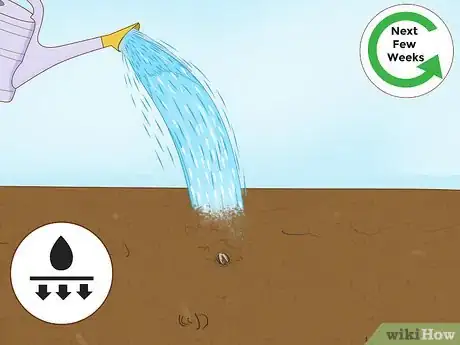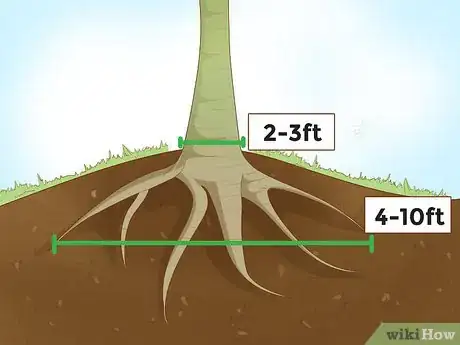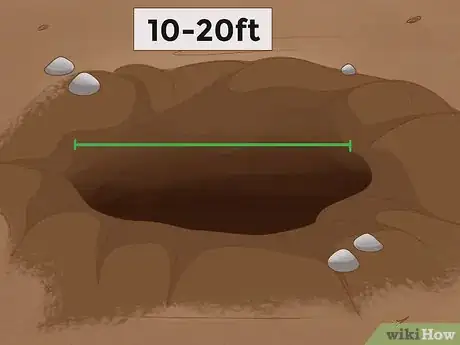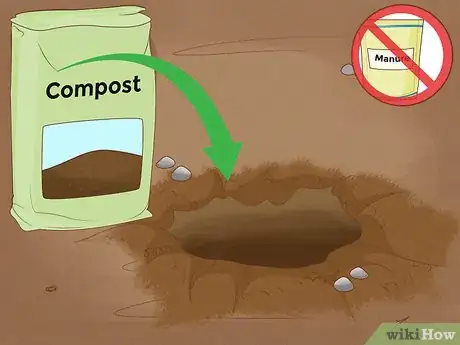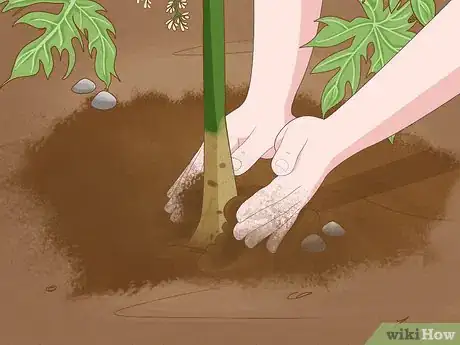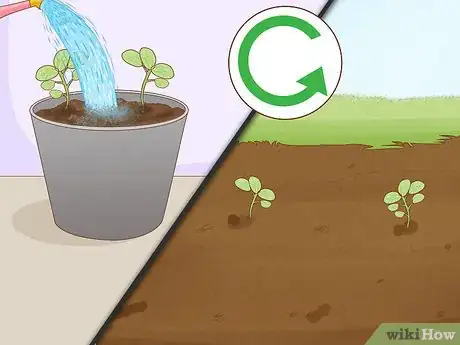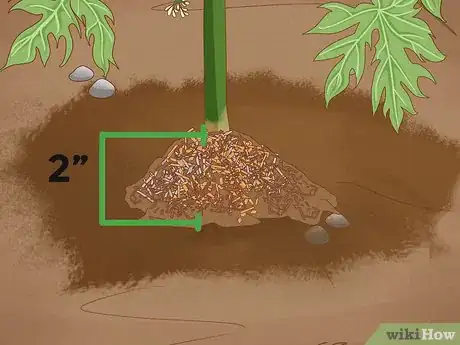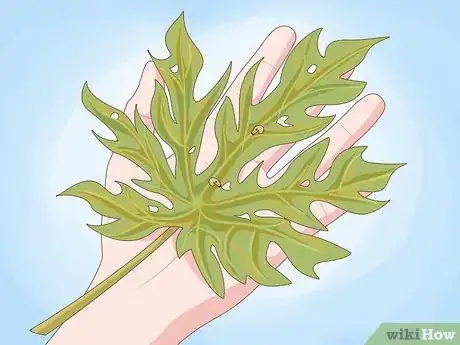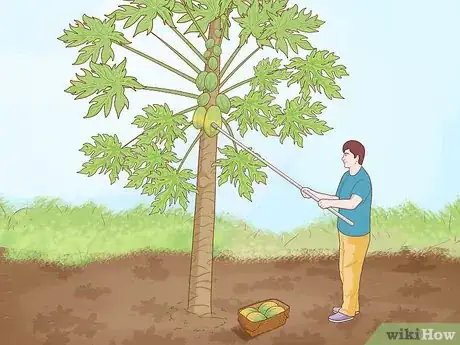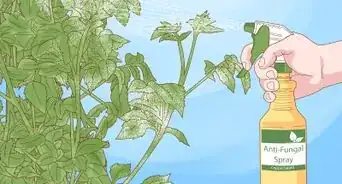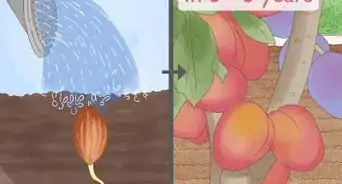This article was co-authored by Andrew Carberry, MPH. Andrew Carberry is a Food Systems Expert and the Senior Program Associate at the Wallace Centere at Winrock International in Little Rock, Arkansas. He has worked in food systems since 2008 and has experience working on farm-to-school projects, food safety programs, and working with local and state coalitions in Arkansas. He is a graduate of the College of William and Mary and holds a Masters degree in public health and nutrition from the University of Tennessee.
There are 8 references cited in this article, which can be found at the bottom of the page.
wikiHow marks an article as reader-approved once it receives enough positive feedback. This article received 12 testimonials and 93% of readers who voted found it helpful, earning it our reader-approved status.
This article has been viewed 360,789 times.
Papaya is a perennial plant that grows in tropical and subtropical climates that have no chance of frost or freezing temperatures. Some species can grow as tall as 30 feet (9m), and most have attractive yellow-, orange- or cream-colored flowers. The plant's fruits may take on a variety of shapes, including pear-like or round, and are known for their sweet, yellow or orange flesh. Learn how to grow papaya for the best chance at healthy plants and a high quality fruit crop.
Steps
Growing Papaya from Seeds
-
1Check whether papayas will thrive in your climate. Papayas thrive in USDA hardiness zones 9-11, which corresponds to minimum winter temperatures of 19℉ to 40ºF (-7℃ to 4ºC).[1] They may be damaged or die if exposed to prolonged frost, and prefer climates that are warm throughout most of the year.
- Papaya trees do poorly in wet soil. If your climate is rainy, you may plant them on a mound of well draining soil as described further on.
-
2Prepare your soil. Choose a nutrient-rich potting mix for tropical plants, or make your own mix out of garden soil and 25–50% compost. As long as the soil drains well, the exact soil texture doesn't matter. Papaya will grow in sandy, loamy, or rocky soils.[2]
- If you are able to test soil pH or you are choosing between commercial potting mixes, select a soil with a pH between 4.5 and 8. This is a broad range, so it is likely that any soil that successfully grows other plants in your garden has the correct pH for papaya.
- If you want more of your seeds to germinate, use sterile potting mix. You can make your own by mixing one part vermiculite and one part potting mix, and baking this mixture in the oven at 200 degrees Fahrenheit (93 degrees Celcius) for one hour.[3]
Advertisement -
3Prepare the seeds. You can use seeds scraped out of the center of a papaya fruit, or seeds purchased from a garden center or nursery. Press seeds against the side of a colander to break the sac surrounding the seeds, without breaking the seeds themselves.[4] Rinse thoroughly, then dry in a dark location on a paper towel.
-
4Plant seeds. You may plant seeds directly in your garden to avoid the risks of transplanting them later, or you may plant them in pots to have greater control of plant arrangement once you see which ones are sprouting. Poke the seeds into the soil about 1/2 inch (1.25 cm) under the surface and about 2 inches (5 cm) apart from each other.
- Plant as many seeds as you have room for to increase the odds of both male and female plants sprouting; you can remove the weaker plants later on. There is no feasible way to tell whether a plant is male, female, or hermaphroditic before planting.[5]
-
5Water the soil moderately well. Water thoroughly after planting, but do not soak to the point that standing water forms on the soil. Monitor the moisture over the next few weeks and water as necessary, keeping the soil slightly damp, but not soggy.
-
6Determine which seedlings to keep. Approximately two to five weeks after planting, some of the seeds will germinate, and emerge through the soil surface as seedlings. After giving them a week or two to grow, pull out or cut the smallest seedlings, along with any seedlings that appear withered, spotted, or otherwise unhealthy.[6] Cull plants until you have only one plant per pot, or the seedlings are at least three feet (0.9m) apart. Keep at least five plants for now for a 96% chance or higher to produce both male and female trees.[7]
- Once you've chosen your most successful plants, move on to the section on planting, if transplanting to your garden, or the section on general care otherwise.
-
7Once plants are flowering, remove excess male plants. If you still have more plants than you want to end up with, wait until the plants are about 3 feet (0.9 m) tall to see what sex each plant is. The male plants should flower first, producing long, thin stalks with several flowers. Female flowers are larger and near the trunk. In order to produce fruit, you only need one male plant for every ten to fifteen females; the rest can be removed.[8]
- Some papaya plants are hermaphroditic, meaning they produce both male and female flowers. These plants can pollinate themselves.
Planting a Growing or Mature Papaya Plant
-
1Build a dirt mound if necessary to avoid water. If there are heavy rains or floods in your area, build a mound of soil 2–3 feet (0.9 m). (0.6–0.9 m) high and 4–10 feet (1.2–3.0 m). (1.2–3 m) in diameter.[9] This will help keep water from pooling around the papaya's roots, reducing the chance of injury or death.
- Read the instructions below before you build your mound, to learn about soil preparation.
-
2Dig a hole otherwise. Make the hole three times as deep and wide as the planting pot or root ball, in the plant's intended permanent location. Choose a sunny, well-drained location, about 10 to 20 feet (3.1 to 6.1 meters) from buildings or other plants.[10] Make a separate hole for each papaya plant.
-
3Mix an equal amount of compost into the displaced soil. Unless your garden soil is already rich in nutrients, replace some of the soil in the hole or mound with compost and mix thoroughly.
- Do not mix with manure, as this can burn roots.
-
4Apply fungicide (optional). Papaya trees can die from disease after transplantation. Follow the instructions on a gardening fungicide and apply it to the soil to reduce this risk.[11]
-
5Add the plant carefully. Add the altered soil back into the hole or pile it in a mound, until the remaining depth is roughly equal to the depth of the potting soil or root ball of the plant being transplanted. Remove the papaya plants from their containers, one at a time, and plant each in its own hole at the same depth as it sat in the container. Handle them carefully to avoid breaking or scraping the roots.
-
6Backfill the soil and water it. Fill the remaining space in the hole with the same soil. Pack gently to remove air pockets if the soil isn't filling the spaces between the roots. Water the newly planted papaya seedlings until the soil surrounding the root ball is thoroughly moistened.
Caring for Papaya Plants
-
1Apply fertilizer once every two weeks. Apply fertilizer to growing plants every 10–14 days, diluting it according to the fertilizer's instructions. Use a "complete" fertilizer, not a specialized one.[12] Continue to apply at least until the plants are about 12 inches (30 cm) tall.
- After the plant reaches this size, commercial growers continue to fertilize papaya every two weeks with 1/4 lb. (0.1 kg) complete fertilizer near but not touching the base of the plant. Follow this practice if you would like to hasten the plant's growth, gradually increasing the amount of fertilizer and length of time between applications until the papayas receive no more than 2 lb. (0.9 kg) every two months starting at seven months old.
-
2Water papaya seedlings and established plants regularly. Papayas can be easily damaged by standing pools of water, but may not produce sizable fruit without regular water access. If planted in loam that holds water well, water no more than once every three or four days. In sandy or rocky soils, increase this to once every one to two days during hot weather.[13] Allow a few more days between waterings during cooler seasons.
-
3Apply bark mulch or wood chips if necessary. Apply pine bark, another bark mulch, or wood chips around the base of the plant if you need to reduce weeds or if the plant looks withered from failure to retain water. Layer 2 inches (5 cm) of mulch around the papaya, no closer than 8 inches (20 cm) to the trunk.
-
4Inspect the papaya's leaves and bark regularly for signs of disease or insects. Spots or yellowing on leaves or bark indicate possible disease. Black spots on the leaf won't typically affect the fruit, but may be treated with fungicide if the infection is severe.[14] Curling leaves may be a sign of picking up herbicide from a nearby lawn.[15] Other problems, including insects or full plant collapse, may require consulting an expert gardener or local agricultural department.
-
5Harvest papaya fruits when they reach the level of ripeness you desire. Tart, green fruits may be eaten as a vegetable, but many people prefer fully ripe, yellow or orange fruits for their sweet taste. You may harvest anytime after the fruit is mostly yellow-green, if you would like them to finish ripening indoors, away from pests.[16]
Community Q&A
-
QuestionHow old does a papaya tree have to be to bear fruit?
 Community AnswerIn hot regions, 6-9 months, and they're ready to harvest. In more temperate areas, 9-11 months, and they're ready to harvest.
Community AnswerIn hot regions, 6-9 months, and they're ready to harvest. In more temperate areas, 9-11 months, and they're ready to harvest. -
QuestionIs it possible to transplant a larger plant in a field?
 Community AnswerA medium size plant can be successfully transplanted. If it is too large, then maybe cut it and plant. Papaya plant will grow even if it is cut from the top.
Community AnswerA medium size plant can be successfully transplanted. If it is too large, then maybe cut it and plant. Papaya plant will grow even if it is cut from the top. -
QuestionCan a papaya seedling be a house plant?
 Community AnswerYes and no. You can have one, but it will eventually grow too big to keep inside.
Community AnswerYes and no. You can have one, but it will eventually grow too big to keep inside.
Warnings
- Do not mow or weed eat close to the papaya tree, as you may inadvertently hit and damage its trunk. Keep a grass-free space approximately 2 feet (.9 m) surrounding the papaya to reduce the need for weed control underneath.⧼thumbs_response⧽
- Refrain from fertilizing the lawn around the papaya tree. Its roots extend farther than its drip line, and excessive lawn fertilizer may damage the roots.⧼thumbs_response⧽
Things You'll Need
- 1-gallon (3.81 L) pots
- Potting soil
- Papaya seeds
- Scissors
- Complete fertilizer
- Shovel
- Compost
- Bark mulch or wood chips
References
- ↑ http://www.gardeningknowhow.com/edible/fruits/papaya/growing-papaya-fruit.htm
- ↑ http://edis.ifas.ufl.edu/mg054
- ↑ http://www.crfg.org/pubs/ff/papaya.html
- ↑ http://edis.ifas.ufl.edu/mg054
- ↑ http://www.ctahr.hawaii.edu/oc/freepubs/pdf/F_N-5.pdf
- ↑ http://www.tropicalpermaculture.com/growing-papaya.html
- ↑ http://www.ctahr.hawaii.edu/oc/freepubs/pdf/F_N-5.pdf
- ↑ http://www.tropicalpermaculture.com/growing-papaya.html
- ↑ http://edis.ifas.ufl.edu/mg054
- ↑ http://edis.ifas.ufl.edu/mg054
- ↑ http://www.crfg.org/pubs/ff/papaya.html
- ↑ http://edis.ifas.ufl.edu/mg054
- ↑ http://edis.ifas.ufl.edu/mg054
- ↑ http://hdoa.hawaii.gov/pi/files/2013/01/npa01-01_blkspot.pdf
- ↑ http://plantdiseasehandbook.tamu.edu/food-crops/fruit-crops/papaya/
- ↑ http://www.crfg.org/pubs/ff/papaya.html
About This Article
To grow papaya, start by planting papaya seeds in the ground outdoors or in an indoor pot if you live in a cold climate. Use a potting mix made for tropical plants or a mixture of garden soil and compost. After you plant the seeds, water the soil regularly so it's always moist but not soggy. Once the seeds sprout after a few weeks, remove any week or unhealthy seedlings so you're left with just 1 plant per pot or plants that are spaced 3 feet apart in the ground. To learn how to plant and grow a mature papaya plant, scroll down!
